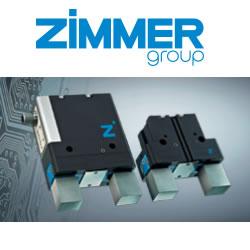Aurora and MIT Celebrate Nine Years of Student Robotics Program Success
Zero Robotics engages students in science, technology, engineering and math (STEM) through computer programming and space research
CAMBRIDGE, Mass., Aug. 11, 2017 /PRNewswire/ -- Middle school students across the country today participated in a live interactive broadcast of NASA astronaut Jack Fischer operating satellites developed by Aurora and MIT aboard the International Space Station (ISS). The basketball-sized, battery operated satellites were controlled using computer code written by the students as part of the Zero Robotics summer learning program.
Founded by MIT's Space Systems Laboratory and run in partnership with Aurora and the Innovation Learning Center, Zero Robotics is a robotic programming competition for middle and high school students. Students learn to write software to autonomously control the SPHERES satellites aboard the ISS. Each year, the Zero Robotics competition challenges students to address a real spaceflight operational scenario.
"Aurora is proud to partner with MIT on this innovative and engaging STEM-education program," said John Langford, Aurora Chairman and CEO. "Zero Robotics has introduced thousands of students over the years to the wonders of spaceflight and robotics. With this next generation of scientists and engineers at the helm, the future of NASA's space program looks exceptionally bright."
Aurora built the SPHERES satellites and has partnered with MIT on the Zero Robotics program since its inception in 2008. Over the years, Aurora's involvement has evolved to encompass competition coordination support, student mentoring, instructor education, and curriculum development.
This year's middle school finals comprised of 13 teams hailing from 12 U.S. states and Russia. Zero Robotics is also open to high school students, with a tournament held each year between September to December for students grades 9-12. The Middle school competition is sponsored by the Center for the Advancement of Science in Space (CASIS), the Northrop Grumman Foundation, and NASA. To learn more about the Zero Robotics program and to view results from today's competition, visit www.zerorobotics.mit.edu. To learn more about Aurora's SPHERES program, visit www.aurora.aero/SPHERES.
About Aurora Flight Sciences:
Aurora Flight Sciences is an innovative technology company which strives to create smarter aircraft through the development of versatile and intuitive autonomous systems. Operating at the intersection of technology and robotic aviation, Aurora leverages the power of autonomy to make manned and unmanned flight safer and more efficient. Headquartered in Manassas, Virginia, Aurora operates production plants in Bridgeport, West Virginia and Columbus, Mississippi, has Research and Development Centers in Cambridge, Massachusetts, Dayton, Ohio and Mountain View, California, and a European office, Aurora Swiss Aerospace, located in Luzern, Switzerland. To view recent press releases and more about Aurora please visit our website at www.aurora.aero.
Featured Product

Zimmer Group - THE PREMIUM GRIPPER NOW WITH IO-LINK
IO-Link is the first standardized IO technology worldwide for communication from the control system to the lowest level of automation.
